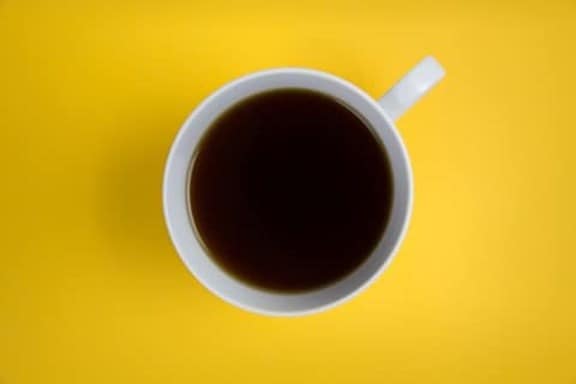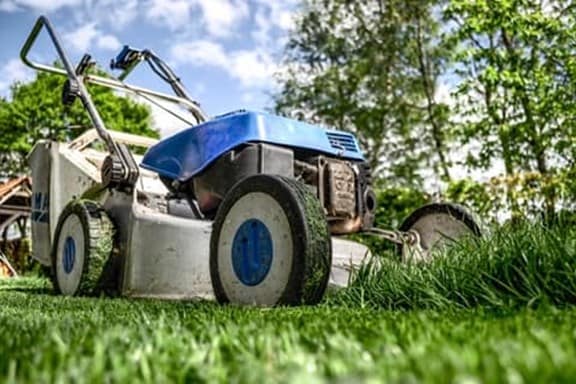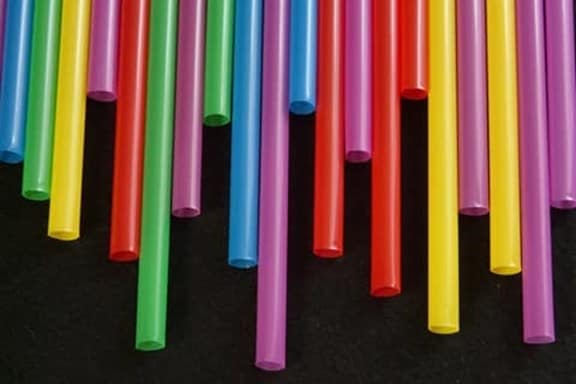
What do we recycle?
At Biffa, we are pretty familiar with our recyclables, but we understand that not everyone is an expert in what can and can't be recycled. With labels not always giving consumers all the information, recycling can feel like a confusing minefield of irreparable consequences if we get it wrong.
To stop the headache, we've come up with the A-Z of recycling with common household and business items you might find yourself needing to dispose of and the best way to do it.
A
Aerosols
Empty aerosol containers made from aluminium can be included in your mixed recycling bins. However, the lids, often made from hard plastic, should be disposed of with general waste. Aerosol containers that are full or partially full are considered hazardous and must be disposed of by a specialist or at a household recycling centre. Call your waste operator for guidance on how to dispose of them.
Did you know?... Each year our dedicated aerosol recycling facility processes over 6.5 million aerosols capturing over 15 tonnes of ozone-depleting gases using specialised tanks. They also produce over 1000 tonnes of solvent to be used as a replacement fuel. It's one of only two of its kind in the UK and was recognised by the Environment Agency as Best Available Treatment for aerosols.
Aluminium cans
Recycle any aluminium cans in with your mixed recycling bins. Watch our video on how aluminium is recycled.
Aluminium/kitchen foil
Also referred to as tin foil, kitchen foil is today made from aluminium, which can be recycled in household collections if clean. Foil or trays covered in food or grease will contaminate other recycling and prevent it from being recycled and belongs with general waste.
Asbestos
Asbestos is a hazardous material and is no longer used but is still found in older buildings. Asbestos can be dangerous to handle without the correct safety equipment and is best disposed of by a specialist hazardous waste services, like Biffa.

Ashes
B
Batteries
Black food trays
Books
Bottles

Bricks
Construction waste, including bricks, pipes and heavy metal, cannot be recycled in a household bin or in commercial mixed recycling containers. They will usually require a skip or van collection for disposal provided by a licenced waste carrier. Undamaged bricks can be reused as they can last for hundreds of years and can often be sold for reuse.Bulky Household Items
Local councils can collect furniture, white goods, flooring and home office equipment if it can't be donated to charity for a one-off fee but restrictions on items might apply. Licenced waste carriers like Skoup can offer greater flexibility and quicker collection times and are available for household and business waste.Business Waste
Business waste is any waste produced by commercial or industrial activities on business premises including homes, offices, shops and warehouses. Businesses must have a business waste collection separate to domestic waste.C
Car Batteries
It is against the law to dispose of car batteries in a bin as they need speciality disposal. Battery acid can burn clothing, skin and even cause blindness if it leaks. Businesses selling new batteries may be able to take old batteries for disposal.Cards
Most greetings cards are paper-based and can be recycled. Christmas cards cannot be recycled, especially ones with glitter on cannot be recycled.
Cardboard
Cardboard is widely recycled unless it's contaminated with food or liquid residue. For business waste, separate cardboard collections are available for larger volumes.Carrier Bags
Plastic carrier bags are not recyclable through kerbside collections, but many supermarkets offer carrier bag return points or offer paper bags which can be recycled at home.Chemicals
Household chemicals such as cleaning products can be disposed of down a toilet or drain, once rinsed the bottle can be recycled. Hazardous or commercial chemicals need to be disposed of by a licensed waste management company.Cling film
Cling film also know as plastic wrap, Saran wrap, cling wrap, Glad wrap or food wrap is generally not recyclable and should go into general waste.Clinical Waste
Clinical waste such as medicines, needles and other healthcare waste is separated into categories: sharp; infectious; redundant medical waste; and anatomical. The four types must be segregated and put into separate containers and disposed of by licensed professionals. For any unused medicine, please return them to your GP or pharmacist.Clothes
Clothes and other textiles are not recycled through kerbside recycling but can be sold, donated or repurposed.Confidential Documents
Businesses that wish to dispose of any confidential documents that expose private and personal information about employees, customers and any other suppliers, by law, must do so securely. For personal records, it is best to shred any confidential documents before recycling them at home.Crisp Packets
Crisp packets are not currently recyclable through kerbside recycling due to their multiple material compositions. However, there are some collection points which accept them.Coffee Pods
Some coffee pod producers offer a return collection to recycle coffee pods which may not be accepted in recycling collections.
E
Egg Cartons
Egg cartons made of polystyrene or plastic are not recyclable, but cardboard egg cartons that are clean can be recycled alongside paper and cardboard in a recycling bin.Electrical Items
WEEE (Waste Electrical and Electronic Equipment), which can be identified with a crossed-out wheelie bin symbol should be taken to a local recycling centre, donated or collected by a licensed one-off waste collection service, like Skoup. WEEE includes computers, laptops, keyboards, microwaves, small appliances, hairdryers, TVs and lamps.Engine Oil
Engine oil can be recycled but not in a standard recycling bin. DO NOT pour engine oil down the drain; it is illegal as it is incredibly harmful to the environment and wildlife. Many local recycling centres will offer safe disposal.F
Film Lids (Plastic)
The thin plastic sheets often found on ready meals should be disposed of as general waste. Some councils will accept the trays or cardboard packaging but always check with your council before putting items into the recycling bin.Food Waste
Food waste is compostable and can be used as fertiliser. Some councils and waste management operators offer separate food waste collections. Food waste (with a few exceptions) can also be added to home compost. Please make sure all packaging has been removed before composting. Find out how Biffa is turning food waste into energy.Furniture
Furniture if in a reasonable condition, can be donated. When purchasing a bed or sofa, many retailers offer to remove your old one for a fee. Other waste collection services, such as Skoup, will collect bulky furniture for a fee and divert as much as possible from landfill.G
Garden Waste
Many councils offer a separate bin for garden waste or dispose of garden waste at your local recycling centre. Businesses carrying out gardening work must follow business waste guidelines and use a licenced waste operator by hiring a skip or other collection services to remove the garden waste.
Glass
Most day to day glass can be recycled including bottles, food jars, and perfume bottles in your recycling bin, if clean. Glass cookware, drinking glasses and mirrors are not recyclable and should be either donated or disposed of in your general waste bin.H
Hardcore rubble
There are often limits on the amount of rubble you can take to a recycling centre in one visit. For extensive building work, you may need to hire a skip.Coat hangers
Hangers are often made from multiple materials, including metal, plastic and fabric and cannot be recycled. Many retailers offer a takeback service for unwanted hangers.I
Ink cartridges
Printer ink cartridges should be disposed of at designated recycling points. Office-based businesses can speak to their waste management operator about on-going solutions for office supply disposal.J
Jewellery
There are specialist services, charities and other organisations who will take your unwanted or broken jewellery so they can be recycled or re-sold.L
Lightbulbs
Energy-efficient light bulbs and LED bulbs can be recycled at local recycling centres while businesses can request a specialist container for fluorescent light strips. Older style incandescent bulbs aren't recyclable and should be disposed of as general waste.M
Magazines
Magazines and catalogues can be recycled along with paper and cardboard, but any plastic packaging used to protect the pages goes in your general waste bin. Discover how Biffa recycle thousands of tonnes of paper each year.
Mattresses
Many councils and other licenced waste operators, like Skoup will collect bulky waste items including mattresses, for a fee, or they can be disposed of at your local household recycling centre.Metals
The majority of metals can be recycled with many household products, including food packaging and empty aerosols, accepted in kerbside collections. Any scrap metal can be removed by a skip, a registered waste carrier service or taken to a local recycling centre.Mobile phones
Mobile phones are made from lots of valuable recyclable materials, even if the phone no longer works. Phones should be taken to local recycling centres for disposal, donated or traded-in. Never put phones or anything with a battery into a recycling or general waste bin.O
Oil
Cooking oils should not be poured down the sink because this can cause blockages in the pipes. Small amounts of cooking oils can go in your food waste bin, but larger quantities, once cooled, should be poured into an empty bottle and placed in your general waste bin.P
Paint tins
Only empty metal paint cans can be recycled at household recycling centres. Plastic paint containers are not recycled but may be accepted by recycling centres as general waste. Any residue of paint must be thoroughly dried before disposal.As paint is a hazardous material, businesses must consult their waste management provider for advice on disposal.
Paper Coffee Cups
Coffee cups are made up of multiple materials and are not accepted in kerbside recycling bins. However, some coffee retailers offer a takeback scheme for recycling coffee cups.Pet Waste
Dispose of used cat litter and dog waste as general waste. Do not put it with food waste, garden waste or compost intended for growing food.
Polystyrene
Polystyrene takeaway containers, cups, plates and packaging should go in the general waste bin or reuse it as packaging or plant drainage.PPE (COVID-19)
PPE (Personal Protective Equipment) is not recyclable and must be disposed of as general waste.Pyrex glass
Pyrex glass is tempered and can withstand high temperatures from cooking; unfortunately, this makes it non-recyclable, unlike regular glass. Dispose of Pyrex cookware in your general waste bin, or if it's still in good condition, you can take this to a charity shop.S
Soil
Soil should not be put in with garden waste or composted; however, small volumes can be taken to a household recycling centre. Businesses can arrange one-off collections through a licenced waste operator.Straws
Plastic straws were once commonplace, but recently, the UK has moved away from plastic straws favouring paper straws and reusable alternatives. Some paper straws have a plastic lining, making them non-recyclable and should be disposed of as general waste. However, 100% paper straws that are unused can be put in a recycling bin.
T
Tyres
Once any metal and any other excess material are removed, rubber from tyres can be ground into crumb rubber and used in a wide range of products. Household recycling centres will accept tyres, and many licensed waste operators, like Skoup will be able to collect them for a fee.W
Wood
Wood is recyclable but not through kerbside collection. Wood can be disposed of at a recycling centre or through a licensed waste company like Biffa and Skoup.Y
Yoghurt pots
Many manufacturers now use PET yoghurt pots, which can be recycled as long as they are wash out first. Always check the packaging label to ensure it can be placed into recycling.We hope that's helped you understand a little more about how and what to recycle but if you have any more you'd like to know about send us a tweet @Biffa and we'd be happy to help!
